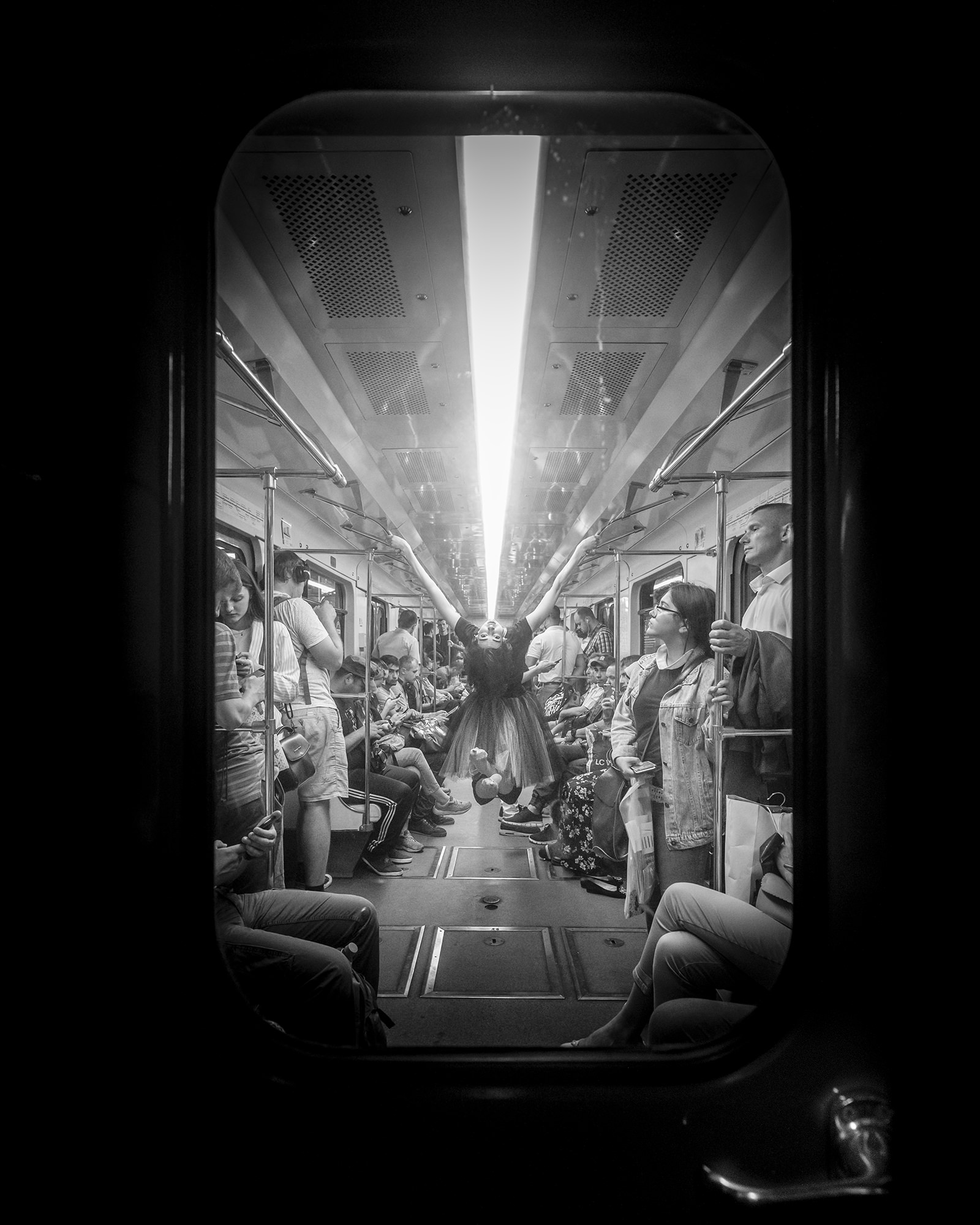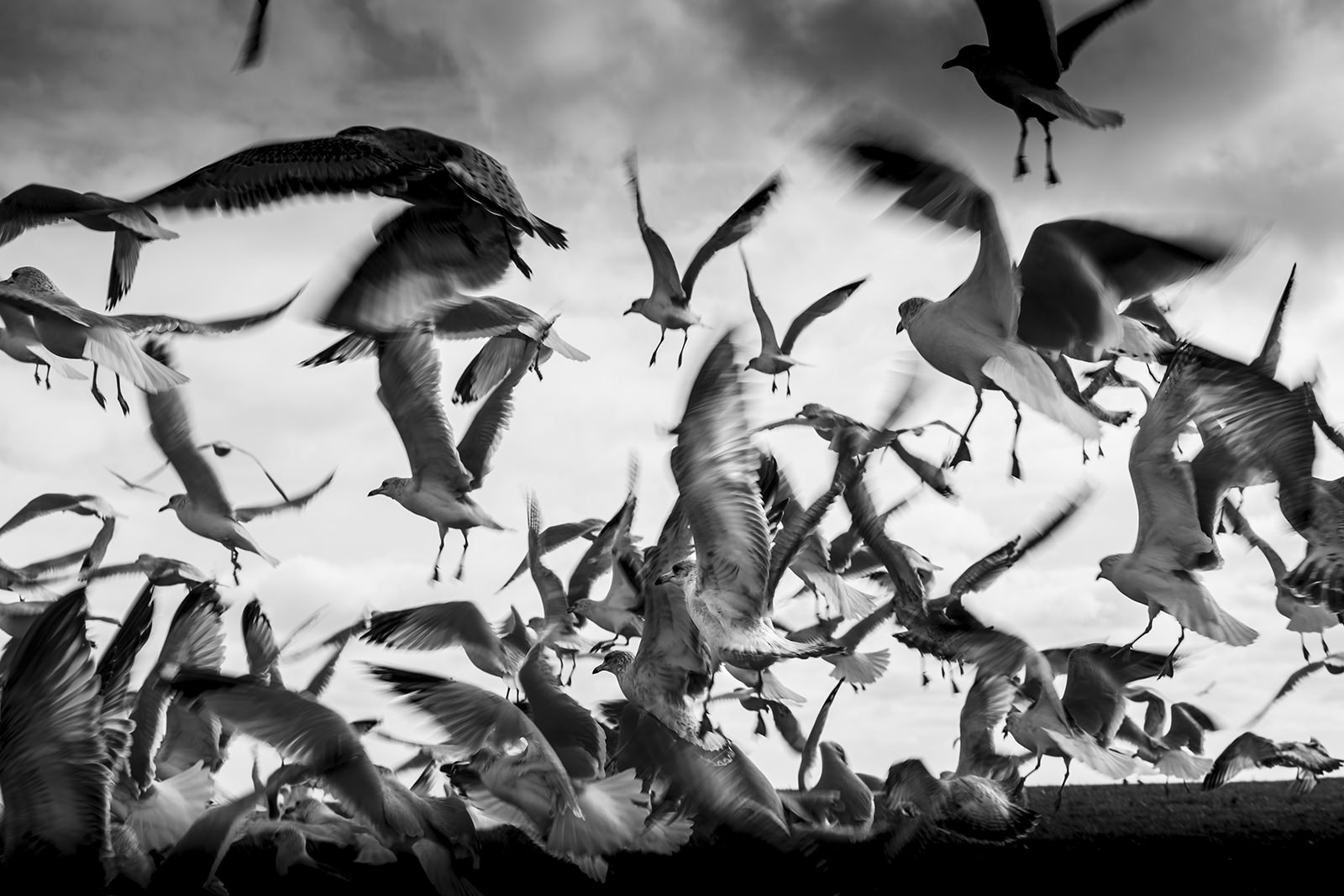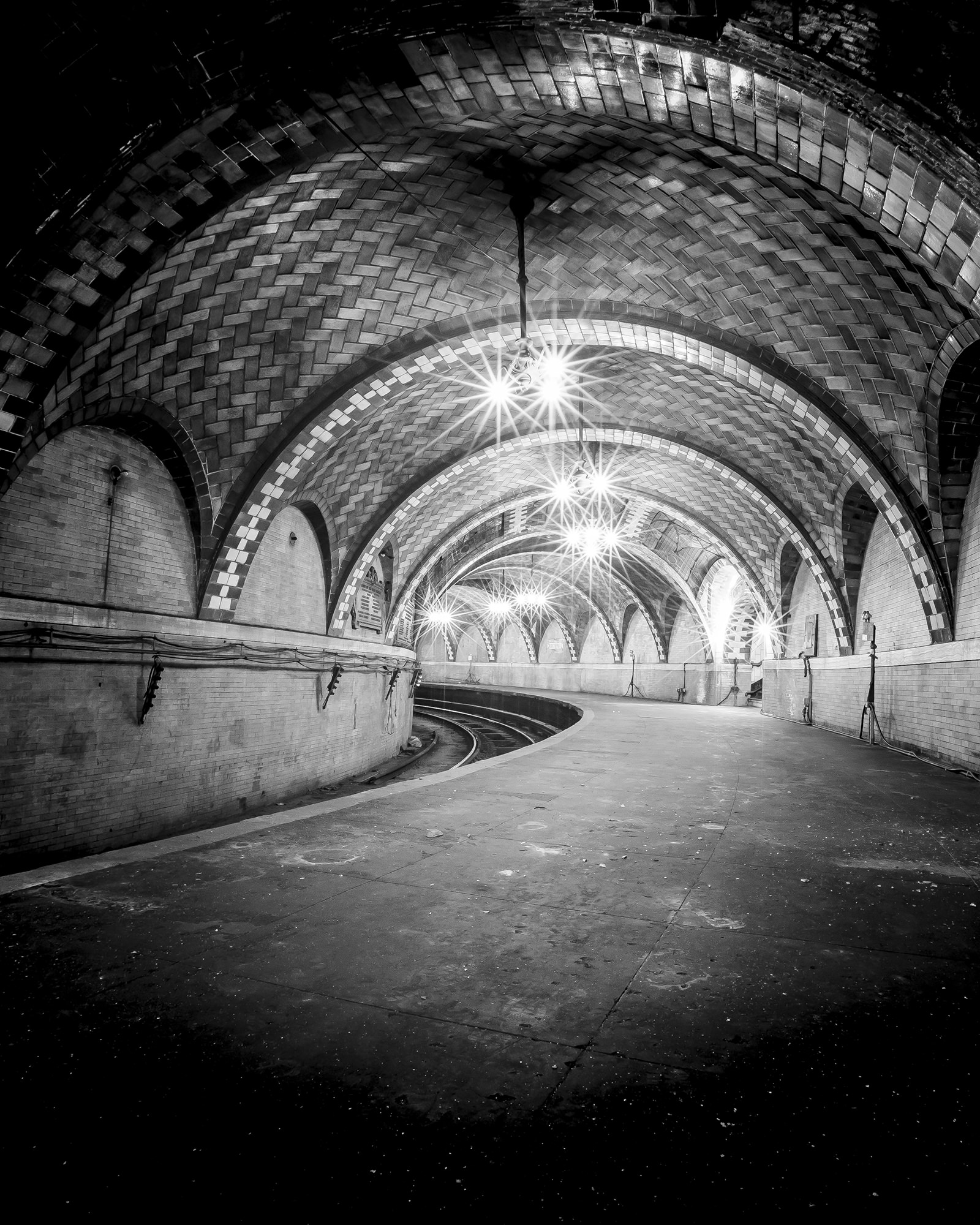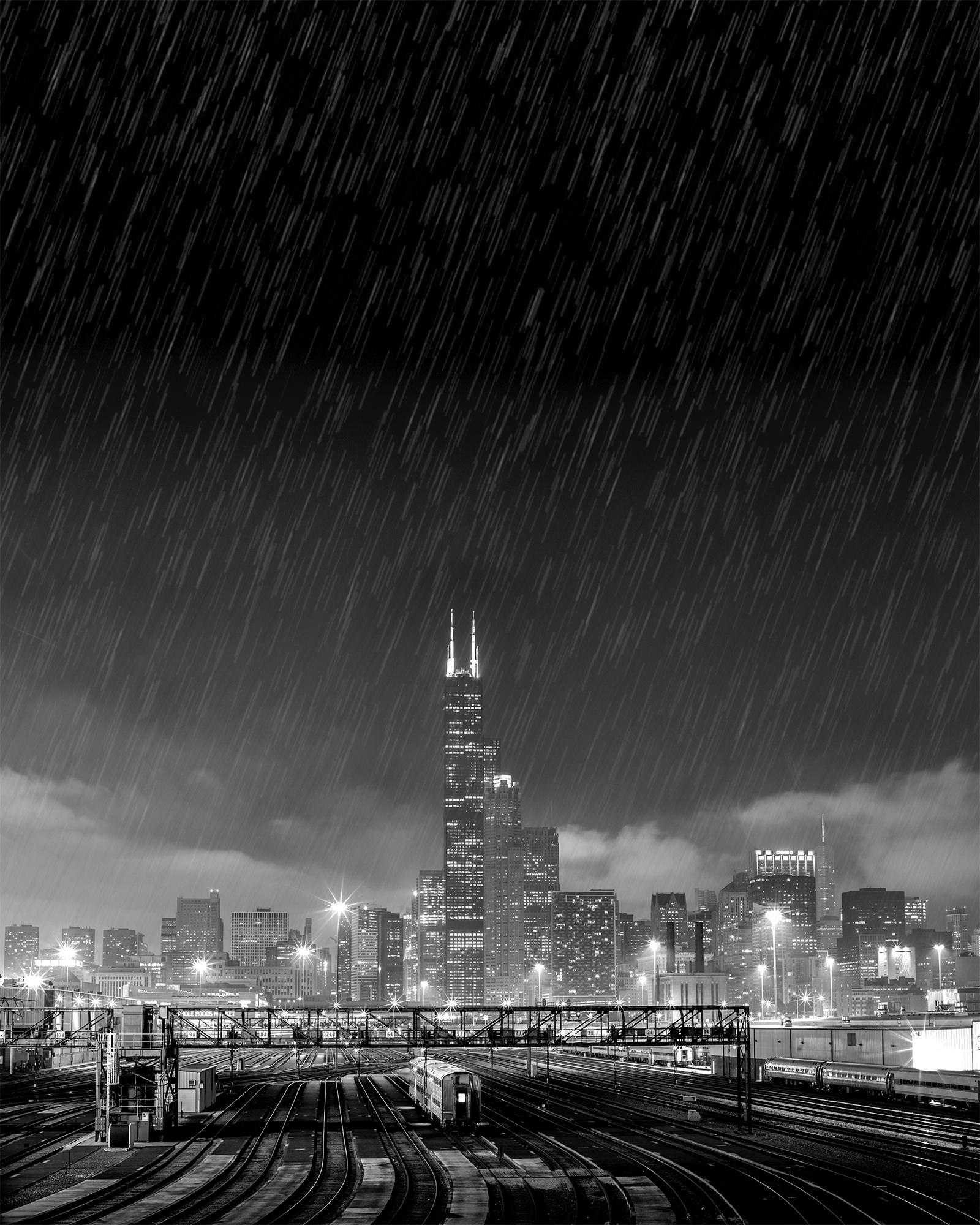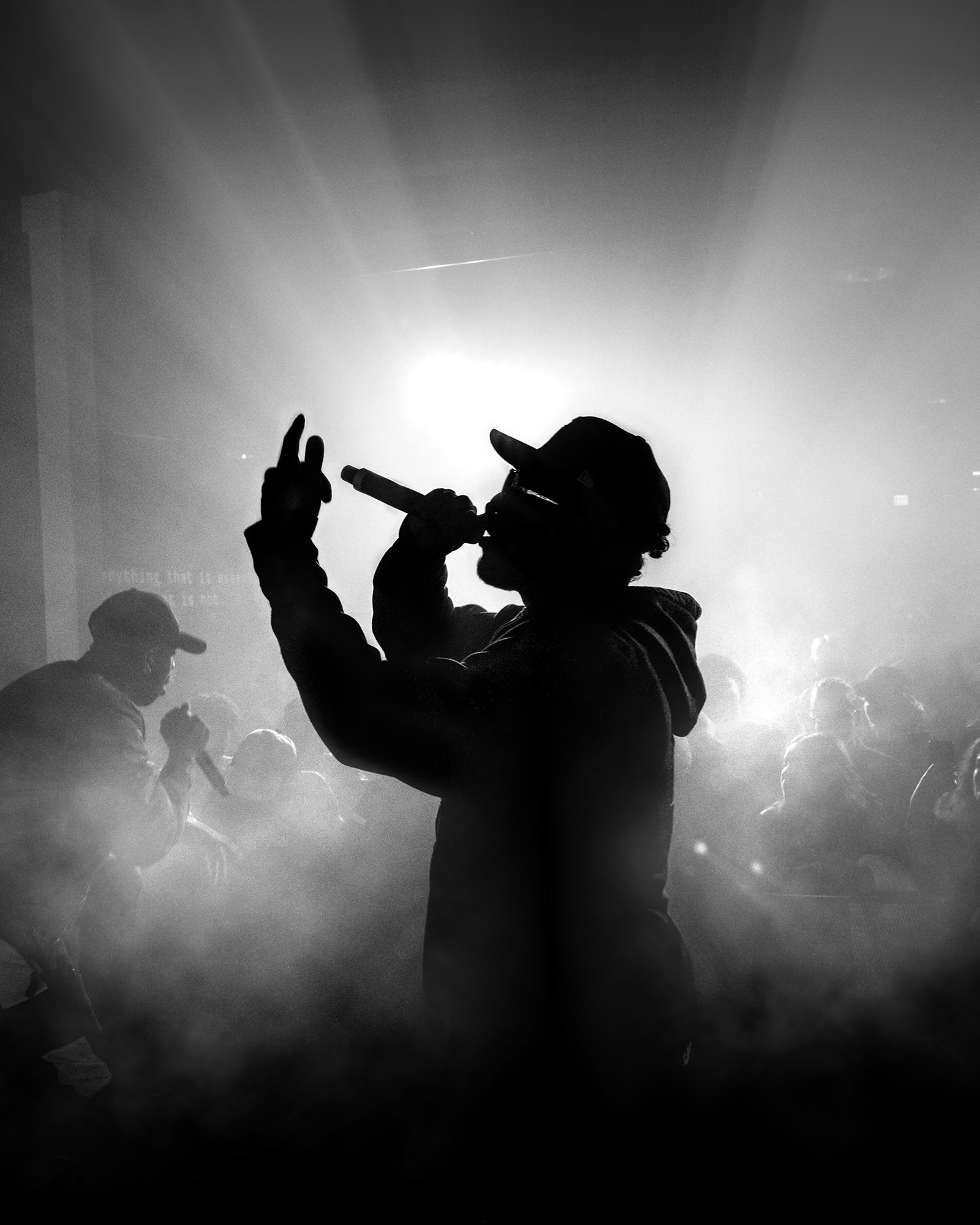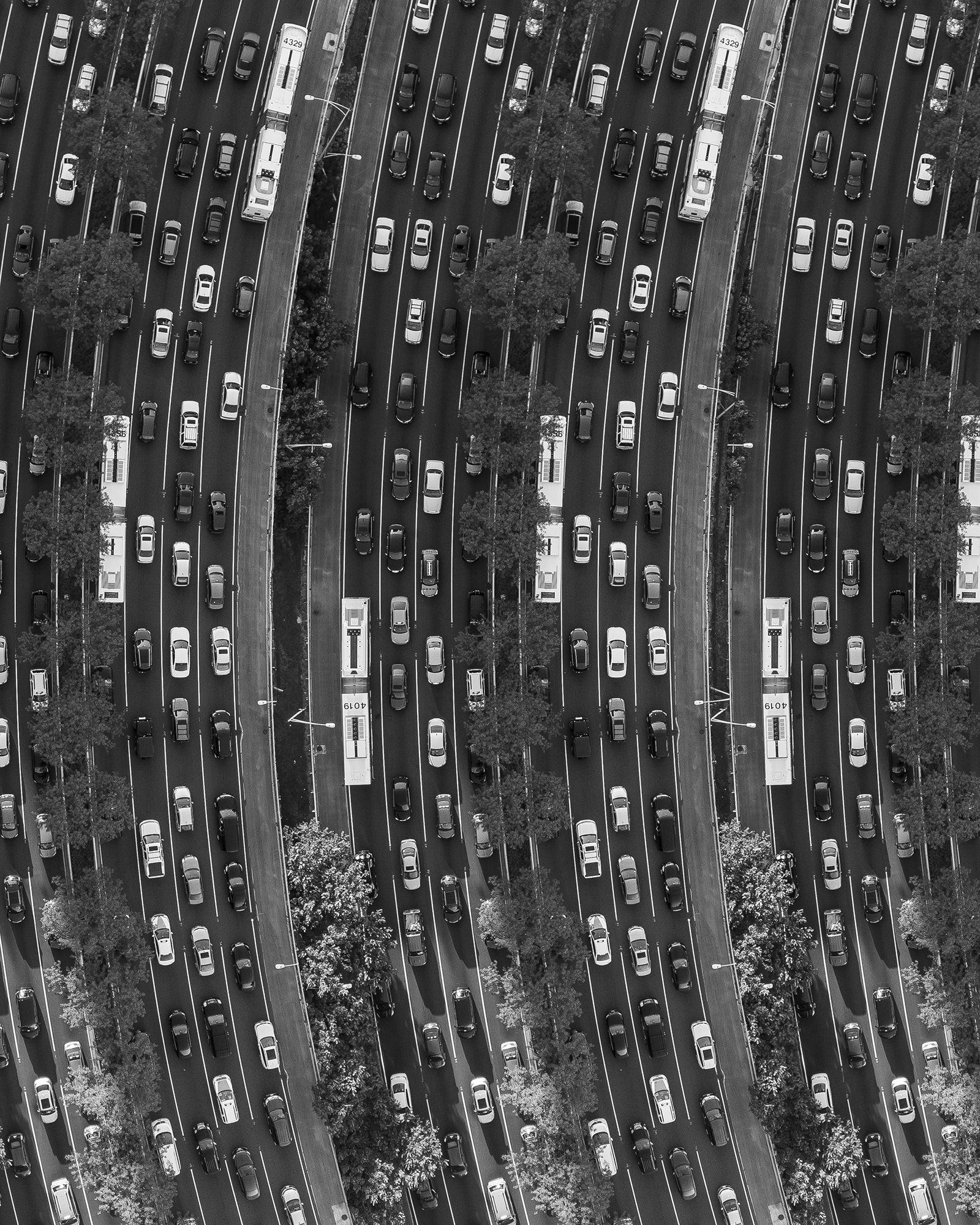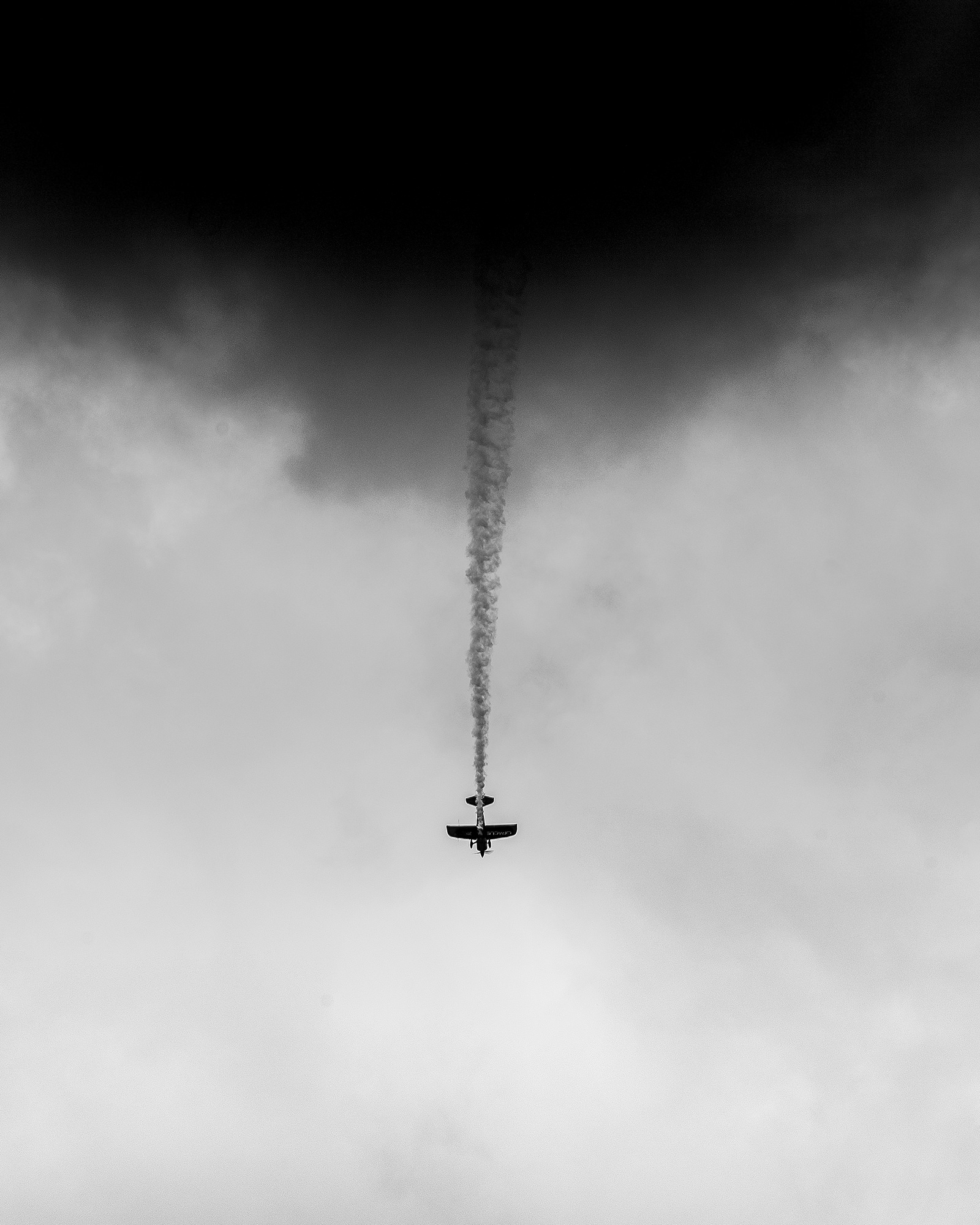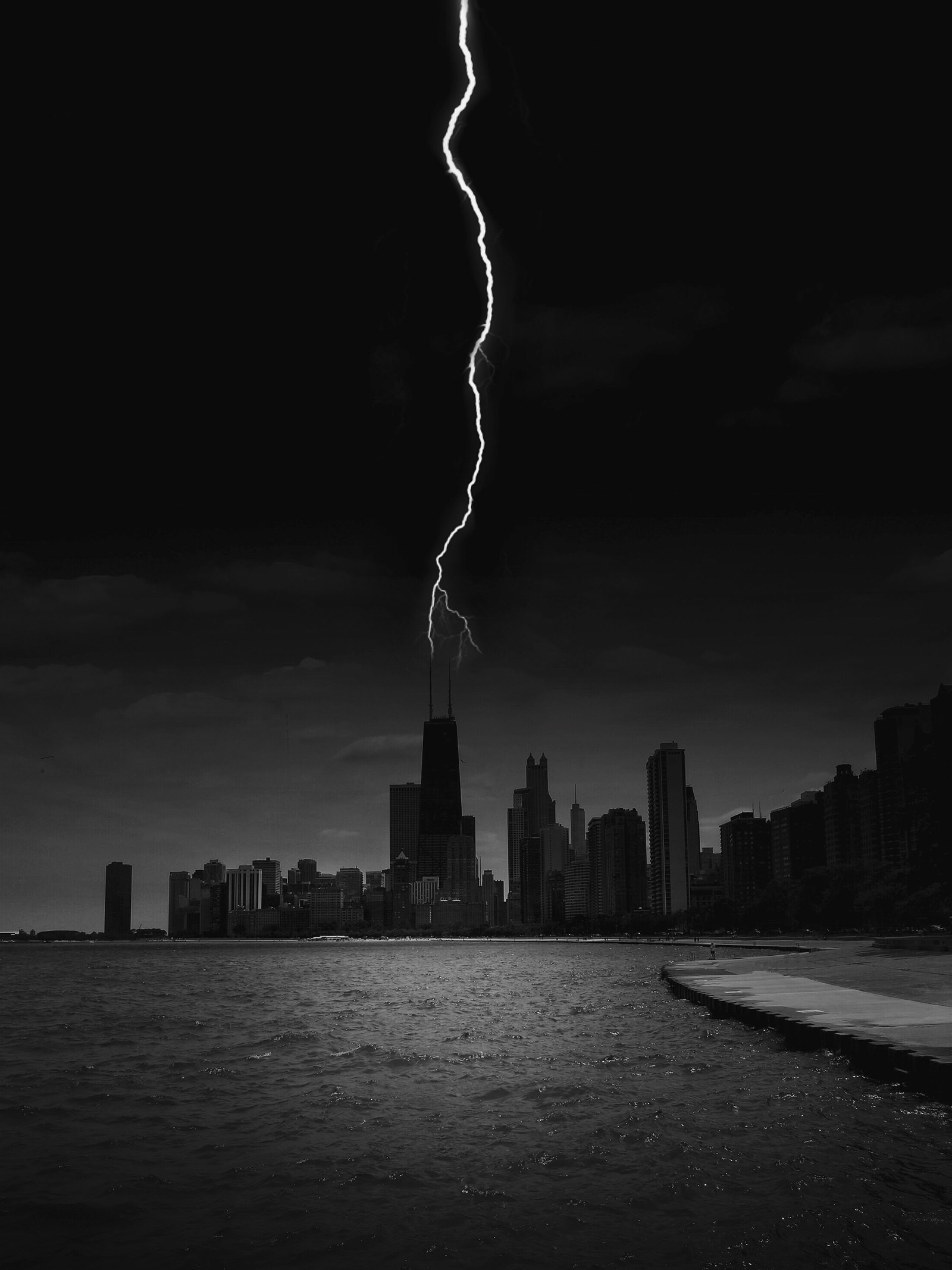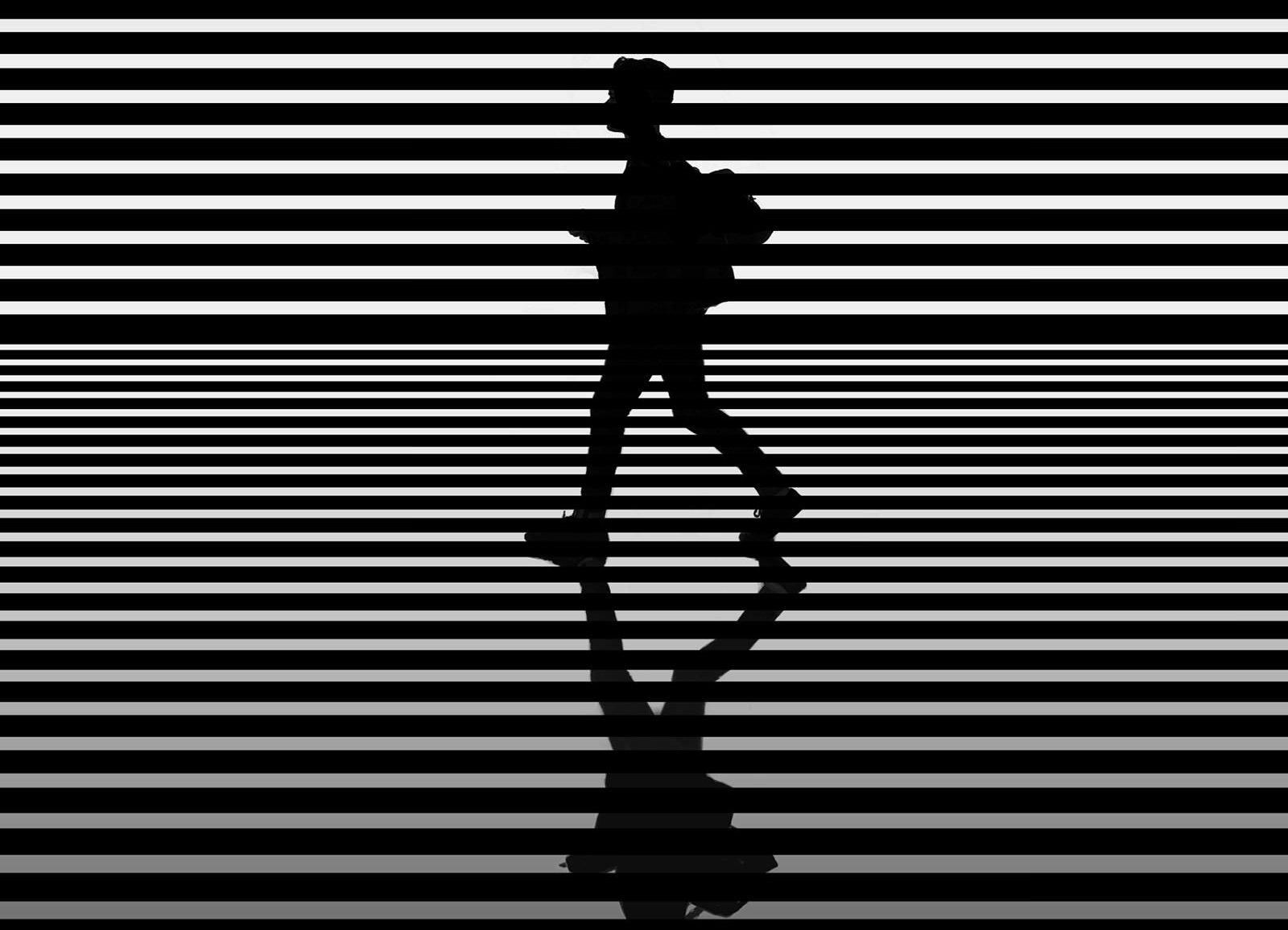
Advertising Emotion in Black & White with Jason Peterson
When advertising creative Jason Peterson first started experimenting with a camera in high school, his photography teacher told him he’d never make it in the industry. But with artistic inclinations and a love for the darkroom, Jason continued with his hobby, eventually developing an iconic style and amassing more than one million followers on Instagram.
With an exclusively monochromatic portfolio and a heavy graphic-design influence, Jason benefits from a strong grasp of visual storytelling he’s picked up from his years in the world of advertising. Despite his bold, minimalist approach, his images are evocative, thought-provoking, and beautiful, all at the same time.
We had the chance to talk with Jason about what it means to be successful on Instagram, how long it takes him to get the perfect composition, and what kind of an impact he hopes to make on the world.
When did you first begin to consider yourself a photographer and artist? How did you get your start?
During the mid-to-late 80s, I was kind of documenting the underground music scene in Phoenix, Arizona – I played in punk rock bands and I did a lot of design work, record covers and flyers and all of that stuff. At that time, I was obviously shooting film, developing, working in a dark room, and a lot of that is what I do to this day. But I was a late adopter to digital photography, because I always felt that the technology got in the way and I could always tell early digital photographs. And, to me, there was this analog process I loved in the darkroom. I loved printing.
For years, I’d been shooting photos really as a hobby. My two best friends I grew up with were “professional” photographers, and it was like, “Oh, yeah, yeah, Jason takes photos,” but I was really like an art director, so no one ever really took me seriously. But I had closets full of unprinted negatives or printed stuff, and there was nowhere for it to live.
It really wasn’t until the early days of social media that I started taking my photography and making it available on social media, you know, specifically with the early days of Flickr and Tumblr. When Instagram launched, I thought it was just this corny app, like Hipstamatic, but then I got on it because of a bet with someone to see who could get 1,000 followers. And I was like, “What’s a follower?” Then I realized, “Wait, this is actually really interesting.”
That social component kind of immediately hit me. And now it sounds stupid to say that, because it’s not that it’s a new thing – it’s the same thing that we’ve always been doing. You know what I mean? Social media is like a way of communication. It’s like a caveman drawing saying, “I’m here. This is what I do.”
When I got on social media, I already had a very defined style. I’d been shooting the same photos at that point for almost 20 years. So, I just started posting them on there and then my Instagram kind of went crazy at the beginning because nobody on it was a great photographer. There were people taking photos of their coffee cups and shit. But I had a very specific point of view and style that I just homed in on.
Does your experience in advertising influence your approach to photography?
I’ve always been in creative advertising – like, I don’t make like cute commercials. But I think a great ad or an image or a billboard or a social media post, you need to create an emotion or a feeling or something that people will walk away with, because you’re on borrowed time.
You have to respect your audience and respect the people. And it’s communication. I’ve been in this advertising industry my whole life, and I know how to communicate. I get asked to come and talk on subjects because I know how to communicate and sell something, which is what a great photograph is. I think a lot of photographers are a little more introverted. And they get it across in their work. But I think the experience in advertising has forced me, through my art and through photography, it’s allowed me to have that ability to communicate, which is what gives me confidence because I’m saying what I’m feeling. And I think a lot of times you get afraid or you get nervous because you feel like you’re not communicating in the right way if people are judging you.
My favorite photographers in the world are the masters combined with a barista who works at Starbucks and a school teacher who lives in Toledo, Ohio. The commonality is just creating something that moves you.
You have an eye for graphic details – lines, shadows, and angles. Is that something you’ve practiced, or has that come naturally to you?
I’ve always had that. I love photos that make you feel small, that make you feel alive, that make you feel like you’re here, if that makes sense. There’s always been this graphic style of purpose that I always loved through a lot of like late 40s, 50s, street photography and stuff like that were a big influence on me. Harry Callahan was a big one – his urban shots when he came to Chicago and shot alleyways in the late 40s, there was that really graphic look to it. I love that stuff.
As far as my style, I have eight different things that I’m working on that are all variants of the exact same thing. My wife says, “All of your stuff looks the same,” and I’m like, “Well, it’s kinda the point.” But it’s also the reason why I’ve had a lot of success in not just social media but photography in general, where you could see my photo and you know it’s mine – to the point where there are copycats and people emulating, which I don’t mind, but I don’t take any interest in because I care more about people that are doing stuff that I can’t do.
What drew you to monochromatic work? Why eliminate color from your photography? What makes for a good black and white image?
It’s like it’s a feeling of everything in place and everything lined up, and everything having an order to it. It’s kind of from being an art director. When I look at things in color, my eyes go crazy and it really just feels like… it makes me feel viscerally uncomfortable. And having it in black and white, having everything in the right spot, it just feels right.
There are a couple photographers that I love that shoot beautiful, muted, awesome color stuff, and I get that same feeling from that. I just don’t know how to do it, you know what I mean?
But it makes you feel alive. It makes you feel happy. It makes you feel sad. It makes you feel like we are here on this earth and like this little moment looks like a blink, when you blink your eyes and it happens. That’s what I always want. And that’s why, a lot of times, I’ll just wait on people and these little real-life moments to happen because it really happened – and I have the image to prove it. And I felt it. So, to me, that’s the constant hunt or, you know, that thing that keeps me continuing to do it.
Your subjects are varied, but your style remains incredibly consistent. What are some of the things you do to maintain this style, whether you’re shooting a natural landscape or a busy urban street?
When I get into stuff, I just try to figure out what is my point of view and vision for that, and then I try to repeat it and repeat it and perfect it.
I’m never really satisfied with what I do. It’s that one image or that one thing that I’m like, “This is so dope,” that keeps me going. I don’t drink or smoke or anything because I have a very addictive personality. But photography is definitely like an addiction to me where my wife – who is obviously a big part of my life – she goes, “Can’t you just stop?” Because I’m always shooting, I’m always making stuff. She’s like, “Do you really need to go shoot another rapper? Do you really need to go in another helicopter?” And I’m like, “I do, because I’m chasing that drug.” I’m chasing that, “I can’t believe that I made that” kind of feeling. But it’s like that feeling goes away instantly. I’m not close to trying to slow down or archive or look at it. I’m never satisfied to look, “Oh, yeah, this is it. This is everything that I wanted.” I’m like, “The one I shot today is actually better,” you know?
A lot of it is just like that search, that hunt, and never being satisfied. And in some ways, it’s like the less work I put into it sometimes, sometimes, there it is. Like when I like overthink it, usually it’s whack.
And if you don’t go out and don’t experience it, you’re never gonna get it.
Do you have any particular habits that are a part of how you begin your creative process?
A lot of it is looking for the right lighting. There are days in Chicago where there are these long shadows, and the light itself has a cold texture to it. I love just walking around and looking at shadows, looking at people walking. I always listen to music when I shoot, and it just slows everything down to be like a music video. It’s almost like white noise to me.
It’s a real like, alone creative process, which helps not just in the creating an image, but helps with any stress or anxiety or things that I might be working on in my advertising job. I get clarity on that from creating this. So, really, I love just wandering by myself and finding these little moments. I’m always looking for that.
What do you do when you hit a wall during your creative process?
I honestly never really hit that wall because I’m always making. I’m always doing – I don’t stop. But I do a lot of different things. I’ll zone out and play video games for a while. I’ll go work out. I’ll go just try to do something else. Again, this goes back to my thing of, like, I believe that I’m talented, but I’m not talented enough. So a lot of times, if I can’t do it, I just don’t. And I lean into the things that I’m really good at.
Your compositions are spot-on. Do you always have your camera ready for that perfect shot, or do you spend a lot of time waiting for the right moment? How often are you out shooting?
I wait all the time. If you’re hanging out with me and you want to do something, usually it’s going to be a bad idea, especially if the light is really nice or something like that in the city. My wife and family are just like, “All right, see ya.” And I’ll go sit there and wait and wait and wait and wait for that moment to happen.
People are always saying, “How did you get the one person in there? You had to Photoshop that.” And I’m like, “I don’t know how to Photoshop, but I just sat there and waited and waited.” That’s a big part of it for me, because I really believe a great photo should make you feel something. And I think, I’m waiting until I feel it, you know what I mean? And then I can’t leave. When I feel in my gut, “I can’t believe that one dude just walked into the light like that,” that’s when I can go. But up until then, I’m just sitting.
What kind of advice would you give someone looking to get out and shoot the way you do?
My biggest thing is experimentation and trying. Don’t worry about what camera it is. Don’t worry about if you know how to use Photoshop or whatever. Take your phone and be your harshest critic – just shoot 3,000 photos, and two of them are going to be crazy. And then just start shooting less and try to get more of them to be crazy. I get hit up on social media all the time – and I answer everyone back, because that’s what social media is – and people are like, “Can you look at my work and tell me what I should do?” I tell them, “Well, first of all, you have 32 posts on Instagram. That’s your problem.” I wouldn’t be asking anyone for anything until you have 2,000. You know what I mean?
Probably seven years ago, one of the first times I got hired for a professional kind of job, I got flown to Iceland to shoot some stuff for Dom Pérignon. I bought a new digital camera, a Canon Mark III, and I had no idea what I was doing. I was freezing on this glacier, calling my friend James in L.A. going like, “What’s the difference between an f-stop and an ISO? And what should my settings be if I want it to look like this?” I knew what I wanted, but I didn’t know how to do it. So all I did was just like, “Okay, I’ll try this, then I’ll try that, I’ll try this.” And that experimentation led me into a formula or a point of view that I use today.
You just have to experiment and figure it out. Nobody is going to shoot it for you or make you better. Shoot, shoot, shoot, shoot constantly, and be your own worst critic. And then you learn each time.
You’ve built up an incredibly strong Instagram following. What does it take to be successful on social media, as a photographer? What opportunities has that offered you?
I know for a fact it’s putting in the work and doing it every single day. Social media is a party. It’s a gallery you’re invited to. If you just put your work out there and stand there like an asshole, everyone’s going to think you’re an asshole. If you put your work out there and you communicate with people – talk to them, like their photos, be social with them – it’s going to be a rad party and people will want to come to the next one. A lot of people get on social media and go, “No one likes my photos. If I put some hashtags on there, would they like them?” Putting a hashtag on there and then not going to that hashtag and liking other people’s photos means you don’t understand social media. Like photos, and then people will like your photos. It’s that simple.
It’s easy, but you have to treat it seriously. I’m on there to this day. I’ll go and like 150 photos whenever I post my own photos.
And be humble. You know, it’s Instagram – it’s a weird little joke that we’re living in right now. Don’t take it seriously. Don’t think that you’re great. Don’t think you’re a rock star. Be humble. Be nice to everyone. It’s a small world – I could give you a thousand stories of how my life’s changed because of Instagram. I get recognized in foreign cities. I get recognized on probably every flight I go on. But I’m just like, “I’m just a dude from Chicago who loves taking photos.”
In 2018, I took my son to Moscow for the World Cup for his high school graduation present. He’s a huge soccer fan. Initially, I say, “Hey, I’m coming to Moscow,” on Instagram, and all these Russian photographers are saying, “Dude, we’d love to hang out with you. We love your work.” I don’t know these guys from anything, so I check out their Instagram feeds. They take cool photos. I hit up this one guy, he picks us up from the hotel, takes us everywhere around Russia, the whole thing.
I go, “I really want to get some cool locations, fly my drone, get some cool shots in Moscow.” So, he pays some weird Russian guy money and he lets us climb on this roof to this amazing, epic view of downtown Moscow. I posted on my Instagram story that, “Hey, look where we’re at. I’m here with my son. I’m flying my drone over Moscow.” Then, all of a sudden, I get DMed a message from someone in one of those buildings with a telephoto lens shooting a photo of me and my son on that roof. And I’m like, “What is going on? And how small is this world?”
But that is what Instagram is. It shrinks the world and it attracts people with like-minded interests and points of view. I’ve met thousands of people from Instagram and every single one of them is amazing, awesome, and talented, and has similar interests that I do because we’re operating in that same style and stratosphere.
What are you focusing on right now, in your work and photography?
I set goals for myself every year or whenever I want to do different things. Three years ago, I go, “I want to direct a music video.” And I’d never directed a music video, but I’m going to use my little Instagram fame to get one of these rappers to let me make a video. I’ve made seven music videos since then, and I love it. It’s amazing – and I brought my photography style to those videos.
This year, I decided I wanted to paint a mural, and I haven’t painted since college, when I took painting classes and color theory classes. So I painted my first mural, and now I’ve just been commissioned to paint a building. I have no idea what I’m doing, but it’s amazing and awesome. One of the other things I’m doing now is theatrical set design. I want to take my photos and my point of view and design a play. So that’s one of the goals that I’m working on this year.
I like finding stuff that excites me and scares me at the same time, you know? Where I have no idea what I’m doing, but I’m like, “I’ll figure it out.” You can Google anything – everything is at your disposal. You just have to be willing to learn. And if you don’t know, a lot of times, I just ask people for help. I have a lot of talented friends who do stuff and help me, and I help them.
Part of that comes from being an art director. You have to have an idea and a vision, and then bring it to life. Put it on film. Put it on paper. Put it in the world. That’s it.
How do you hope your work impacts viewers? What do you aim to express through your photography?
Just to make them happy, make them sad, make them feel something, make them feel alive. The reason why social media is so big is that we’re all afraid and we’re all alone in the world and we’re just all looking for reasons to say, “I’m here, I’m alive, I’m doing this rad shit.” I just want to do photographs that make people feel alive, and hopefully people think about me or remember me. Maybe it’s that thing of leaving a point of view or a legacy – I look at photographs that were shot by people that are dead now and I’m like, “What were they thinking about when they shot that image?” It’s amazing.
I don’t know. That’s some weird old-man shit.
Jason Peterson is a Chicago-based photographer who opened his own advertising agency, The Times, in 2019. He primarily shares his work through his hugely-popular Instagram account – which has earned him, among other opportunities, an invitation to shoot Obama’s farewell speech in January 2017.
